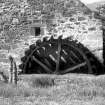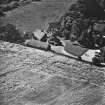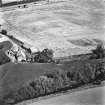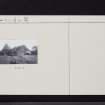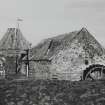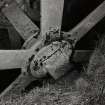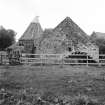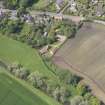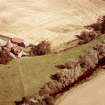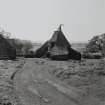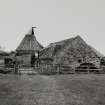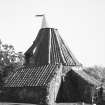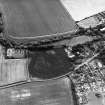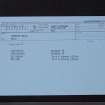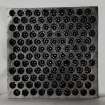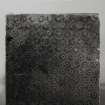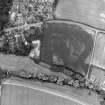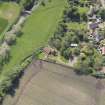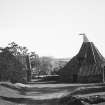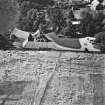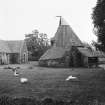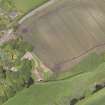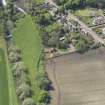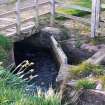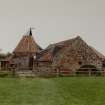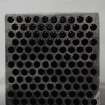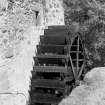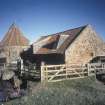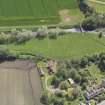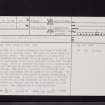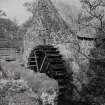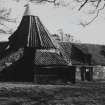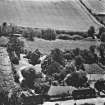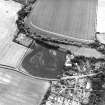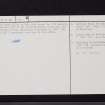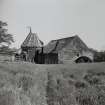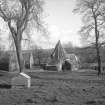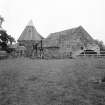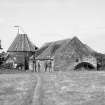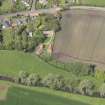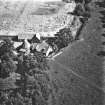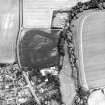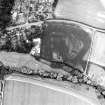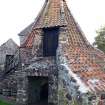Pricing Change
New pricing for orders of material from this site will come into place shortly. Charges for supply of digital images, digitisation on demand, prints and licensing will be altered.
Upcoming Maintenance
Please be advised that this website will undergo scheduled maintenance on the following dates:
Thursday, 9 January: 11:00 AM - 3:00 PM
Thursday, 23 January: 11:00 AM - 3:00 PM
Thursday, 30 January: 11:00 AM - 3:00 PM
During these times, some functionality such as image purchasing may be temporarily unavailable. We apologise for any inconvenience this may cause.
East Linton, Preston Mill
Watermill (18th Century)
Site Name East Linton, Preston Mill
Classification Watermill (18th Century)
Alternative Name(s) River Tyne
Canmore ID 56219
Site Number NT57NE 20
NGR NT 59480 77882
Datum OSGB36 - NGR
Permalink http://canmore.org.uk/site/56219
- Council East Lothian
- Parish Prestonkirk
- Former Region Lothian
- Former District East Lothian
- Former County East Lothian
NT57NE 20.00 59480 77882
(NT 5948 7787) Preston Mill (NR) (NTS)
OS 6" map (1968)
NT57NE 20.01 NT 59374 77819 to NT 59656 77898 Mill-lade and tail-race
NT57NE 20.02 NT 59360 77794 Weir
For adjacent Preston Mill Cottage, see also NT57NE 49.
Preston Mill is a plain rectangular building of mortared masonry with a pantiled roof. The mill has been driven by an undershot wheel. The present wheel is of iron with wooden paddles and measures 3.4m in diameter. To the N of the mill and joined to it by an overhead wooden foot bridge is the kiln. It is a circular building with a conical pantiled roof and has an outside stone stairway leading to the upper storey. The kiln is supported by buttresses and several small buildings are attached to its perimeter. To the E of the kiln is a rectangular L-shaped outbuilding with a pantiled roof.
A plaque on the W wall of the mill states that the mill was presented to the National Trust for Scotland in January 1950 by the trustees of the late John R Gray. The property is in fair condition.
Visited by OS (WDJ) 20 October 1962.
(Location cited as NT 595 779). Preston Mill, 17th century. A one-storey and attic rubble range with a circular kiln. There is a detached single-storey office and granary block. All the buildings have pantiled roofs. There is a 6-spoke, wood and iron low-breast wheel driving two pairs of stones. Restored and opened to the public by the National Trust for Scotland.
J R Hume 1976.
Grain has been milled on this site since the 12th century. A substantial part of the existing fabric dates from the 17th century; it was extensively renovated in 1760. The mill is still functional, and open to the public.
R Prentice 1976; J R Hume 1976; C McWilliam 1978.
Preston Mill is situated on the N bank of the River Tyne to the NE of the village of East Linton (NT57NE 78). It is a major property of the National Trust for Scotland, and is well publicised as such. Houston Mill (NS57NE 193.00) is on the S bank, almost opposite.
Information from RCAHMS (RJCM), 2 March 2006.
Modification (1660)
Building shows evidence of renovations with timber work from c.1660.
Conservation (1950)
Machinery renovated prior to handing over to the National Trust for Scotland
Publication Account (1985)
In 1835 Preston Mill was one of seven water-mills in Prestonkirk parish-4 oatmeal and barley mills, 1 exclusively barley mill, 1 flour mill and 1 associated with a distillery. In 1854, some 73 are recorded in total for rural East Lothian, 34 of them corn mills and 14 on the River Tyne. The Preston mill complex is not as entirely typically Scottish, however, as Livingston Mill in West Lothian (NT 033668), for its polygonal kiln with conical ventilator suggests something of the Low Countries and parallels with hop-country oast-houses in south-east England. Originally, access to the kiln was restricted to the stone staircase outside. At firstfloorlevel the grain was spread about 13 cm-16 cm thick on the iron plates (formerly, perforated clay tiles) to be dried by the fire below.
The mill itself is on two levels-the upper floor housing the stones and hoppers. First the grain was cleaned, through the cockIer; then fed into the shelling stones to separate the husks, removed by the fanners below. Upstairs once again, and the kernels were ready for grinding into meal. All this machinery is powered by an undershot water wheel and wooden cog wheels and gearing, the flow of water to which is controlled by a sluice operated from within the mill. The mill is likely to be 18th century; the kiln may be somewhat earlier. The whole complex is attractively built of orange sandstone rubble and roofed in traditional east coast pantiles.
A ten minute stroll south of the mill lies Phantassie Farm, where the engineer John Rennie was born in 1761 and where a wind-powered threshing machine was introduced in 1799. The farmhouse is 18th-19th century; the long two-storey steading is mid 19th century- as is the single-storey half-square block of farm cottages. The lime kiln, however, is late 18th century and the distinctive doocot probably 16th-17th century.
Such beehive doocots (cf Corstorphine in Edinburgh, NT 200725) are normally older than rectangular doocots. All their roofs, however, usually slope from north to south to give the pigeons a surface to bask on, and the north wall often projects upwards to give shelter from the north winds. String courses around the building were not merely decorative, but helped deter rats from climbing and entering through the flight holes. Within, the walls are lined with stacked rows of stone-built nesting-boxes, human access to which at Phantassie is by way of a ladder fIxed to the cross-beam.
For these were the intensive farming techniques oflate medieval and somewhat later times, when lairds sought to provide themselves with fresh young pigeon meat, in season, at the expense of their tenants' and neighbours' crops! Phantassie had nearly 600 nestingboxes; but some of the later 18th century doocots had over 2000. They were common in many parts of eastern Scotland, and remarkably high numbers have survived-perhaps on account of the old belief that if a doocot were demolished, the wife of the proprietor would die within the year!
Information from 'Exploring Scotland's Heritage: Lothian and Borders', (1985).
Project (2007)
This project was undertaken to input site information listed in 'Civil engineering heritage: Scotland - Lowlands and Borders' by R Paxton and J Shipway, 2007.
Publication Account (2007)
The mill is a rectangular masonry building with pantile roof containing millwork driven by an undershot waterwheel. The iron wheel of about 11 ft diameter with wooden paddles can, on request, still operate much of
the, probably, early-20th century machinery, including a small Archimedes screw. Adjoining, over a timber
bridge, is an early circular masonry, buttressed, drying kiln with conical pantile roof and rotating ventilator and
wind vane. Substantial elements of the buildings, including some timberwork, date from 1660, or earlier, with extensive renovation in ca.1760. The mill ceased to operate commercially in 1950 when it was given to the National Trust for whom Joseph Rank restored the machinery to working order. The mill is now a significant visitor attraction. Nearby is Houston Mill where Andrew Meikle, inventor of the corn threshing machine, who probably advised on Preston Mill millwork, was the millwright and with whom the young John Rennie spent an invaluable apprenticeship. In 1772 Meikle invented the ‘spring’ sail for windmills using louvred shutters.
Meikle’s finely executed gravestone of 1811 near the parish church door, not far from George Rennie’s, describes him as a ‘Civil Engineer’.
R Paxton and J Shipway 2007
Reproduced from 'Civil Engineering heritage: Scotland - Lowlands and Border' with kind permission of Thomas Telford Publishers.
Standing Building Recording (14 January 2013 - 28 January 2013)
AOC Archaeology Group was commissioned by the National Trust for Scotland to undertake a detailed measured, written and photographic survey of the main mill and kiln buildings at Preston Mill in East Linton in East Lothian. The work included a detailed measured survey, written and photographic record of the mill and kiln building and was undertaken in January 2013.
A mill at East Linton is thought to date back to the Medieval period, although the present stone built mill building dates to a much later date, possibly the 18th century. It is a two-storey mill building and kiln, with a visitor centre, the former miller’s cottage, to the east. The upgrading of the machinery throughout the years, and gradual wear and tear on the building has led to phases of rebuild and repair evidenced by the blocked openings and phase lines in the build. The machinery and gearing, also, will have been upgraded throughout the 19th and 20th centuries, with timber wheels and cogs replaced with iron fittings and redundant cog-holes and other recesses in the south wall of the mill identifying earlier arrangements.
AOC Archaeology Group, 2013
Watching Brief (27 September 2023)
A programme of archaeological works comprising a watching brief was required by National Trust Scotland during emergency repairs being undertaken on a water mains pipe going between two buildings at Preston Mill, East Linton, East Lothian (NT 59470 77940 centered). The approximate site area is located one metre form the Preston Mill Scheduled Monument (SM 13314). The scope of the archaeological works has been determined by East Lothian Council who are advised on archaeological matters by Mr Andrew Robertson of the East Lothian Council Archaeology Service, ELCAS. The archaeological watching brief was achieved through the hand removal of topsoil and overburden. All excavations were supervised by an experienced field archaeologist. The archaeological watching brief was undertaken on the 27th September 2023. Weather conditions were fine and dry and good archaeological visibility was achieved. A small trench measuring approximately 2m in length by 0.50m in width was excavated by hand through topsoil in order to address a leaking water pipe. The trench was positioned parallel to a stone field boundary approximately 1m from the Scheduled Area. The trench was excavated to a depth of 0.25m after which the standing water was drained in order to expose the pipe. Numerous tree roots were encountered. All excavated material was cast to the side for inspection. Several sherds of ceramic tile drain or garden pots were observed. Upon the pipe being fixed a plastic access duct was cemented in place and the trench backfilled with topsoil. No archaeologically significant material or features were observed during the watching brief.
Information from OASIS ID: aocarcha1-519404 (R Engl) 2023
























































